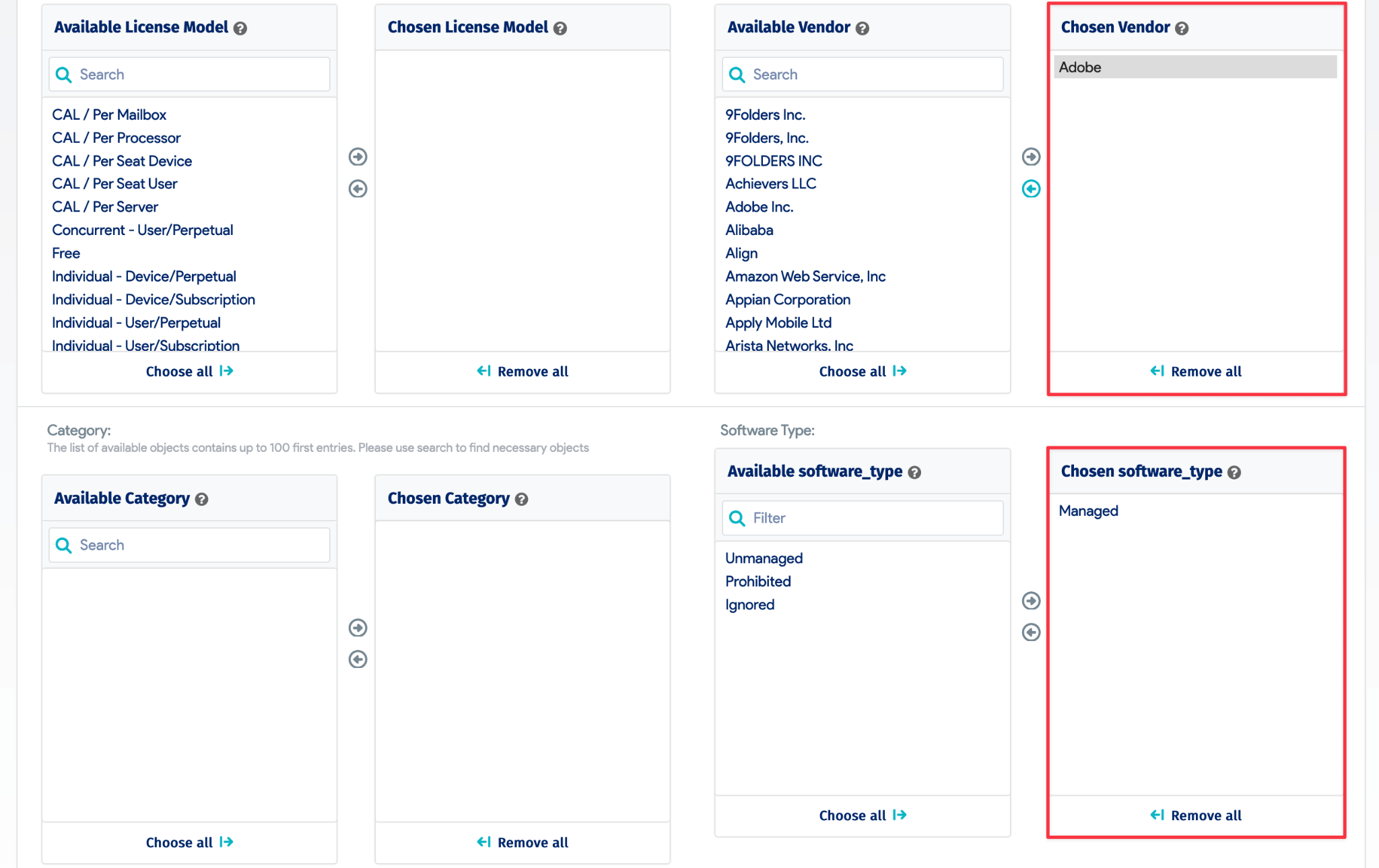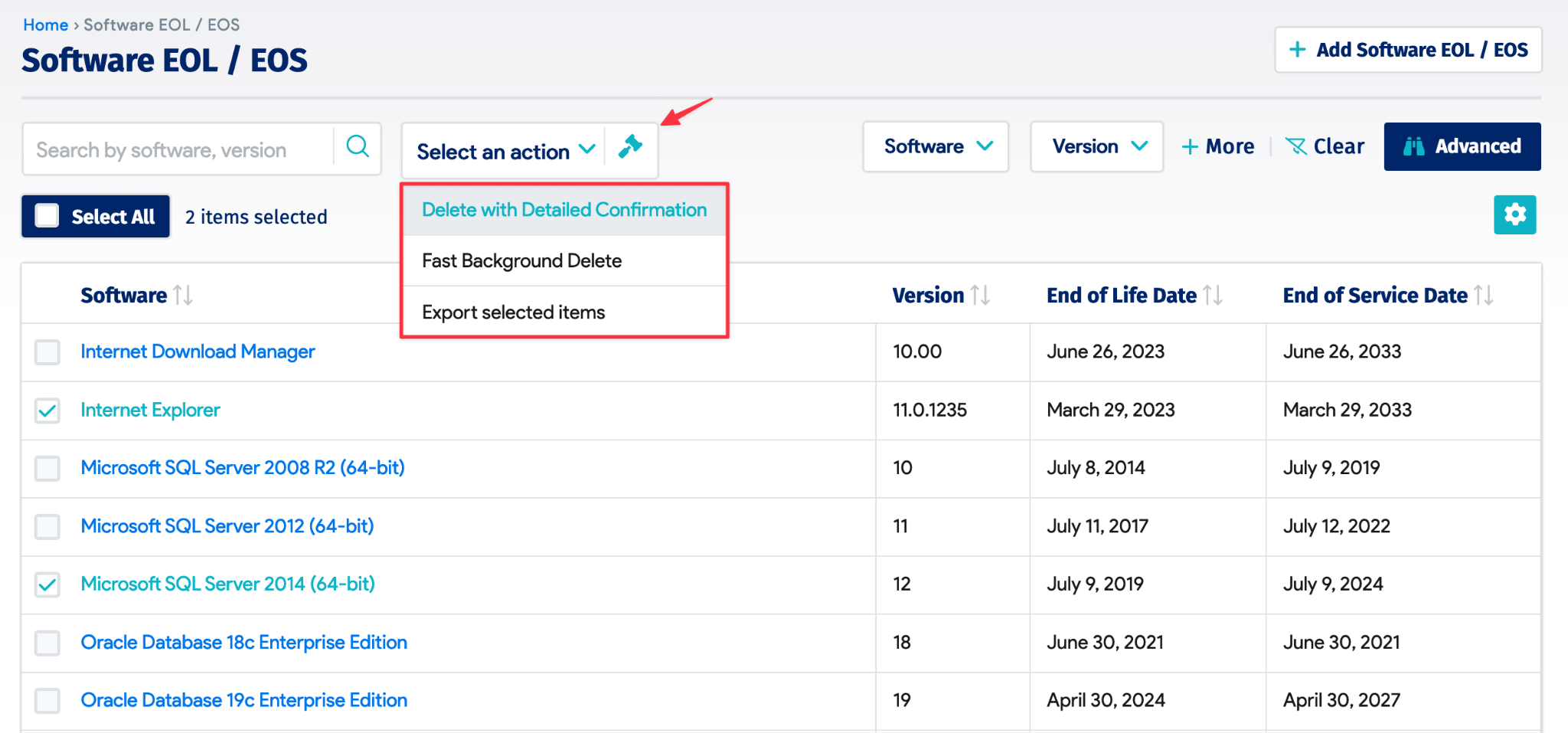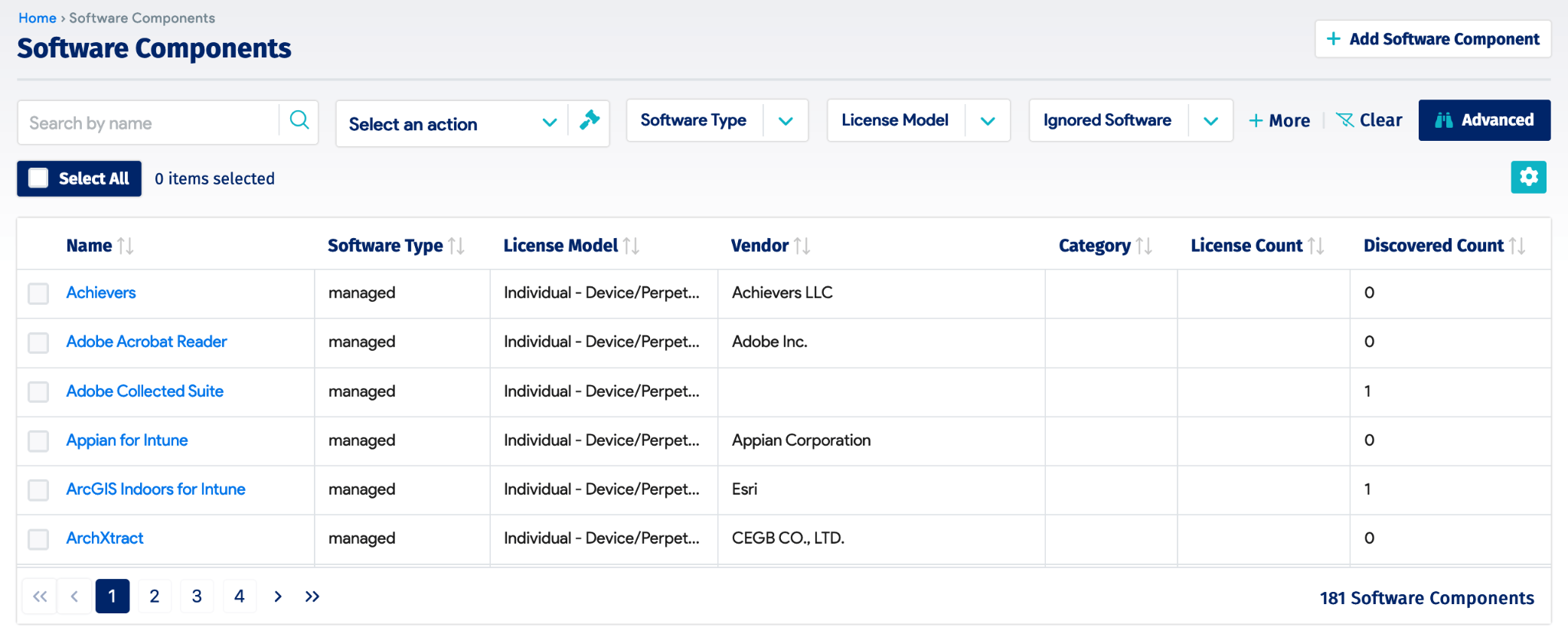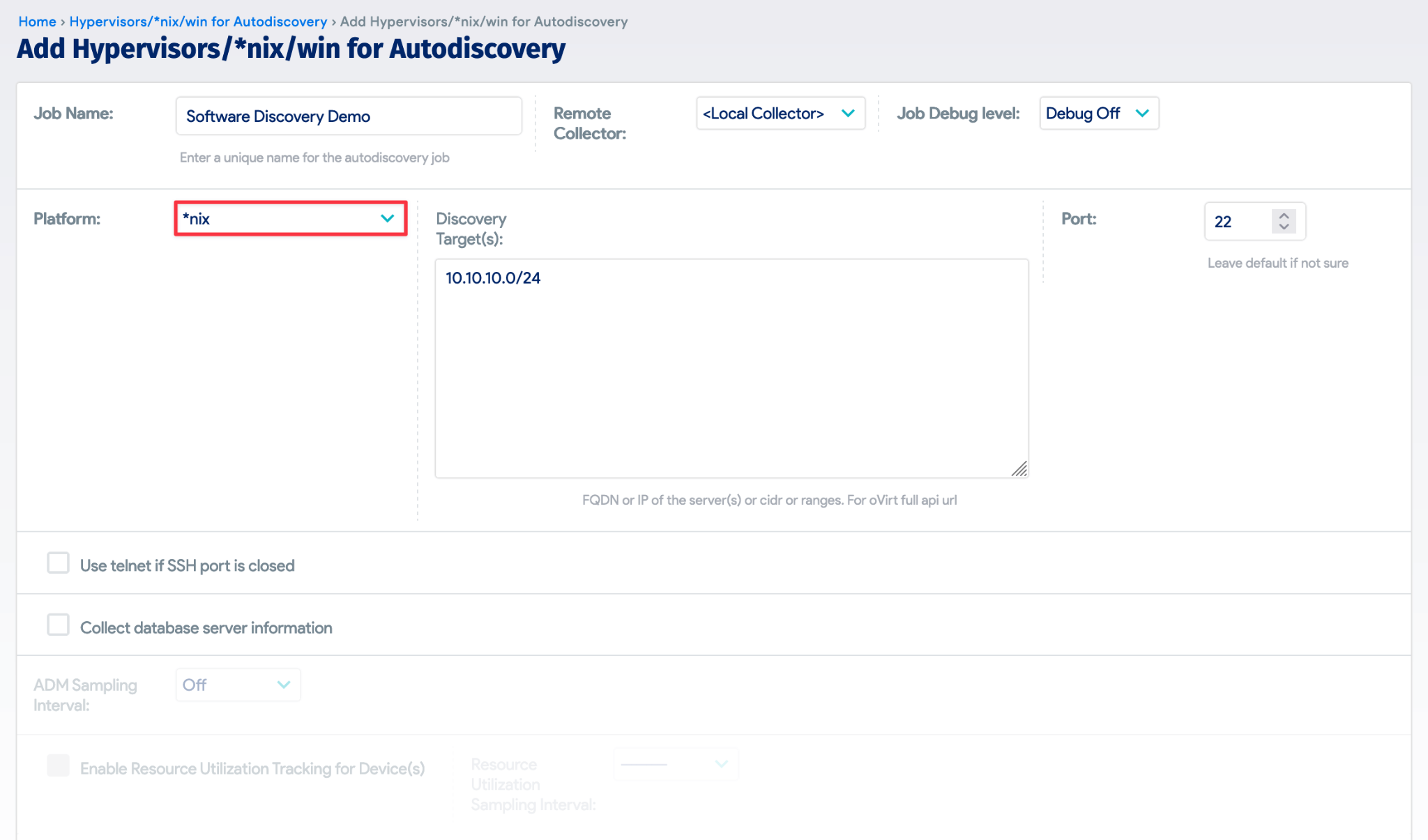Software License Management: Key Practices and Concepts
The “cost” of software today is a perpetual, evolving expense that changes due to shifting usage patterns, vendor agreements, and the hidden labor involved in ensuring compliance. Unsurprisingly, software licensing represents a significant portion of IT expenditure for modern enterprises.
Software license management (SLM) sits at the core of IT asset management (ITAM), and is the practice of tracking, managing, and optimizing software licenses throughout their lifecycles. An effective SLM practice empowers you to:
- Slash unnecessary software spend
- Remain compliant
- Maximize the value of every software investment
- Mitigate the security risks associated with unlicensed or out-of-date software
However, SLM is easier said than done. An enterprise today will most likely juggle multiple SaaS subscriptions, hybrid licensing models, and per-user or per-core metrics. One misinterpretation of a complex end user license agreement (EULA) can snowball into a major issue.
In this article, we discuss the core processes of SLM and the best practices to overcome common challenges in the evolving landscape of cloud-based licensing, subscription models, and complex vendor agreements.
Summary of software license management key practices
| Best practice | Description |
|---|---|
| Implement a defined SLM policy | Establish clear guidelines for software procurement, deployment, usage, and retirement, outlining roles and responsibilities. |
| Centralize license records and agreements | Maintain a comprehensive and easily accessible repository of all software licenses, contracts, and supporting documentation. |
| Automate SLM processes | Leverage tools for automatic software discovery, license inventory updates, and usage tracking to reduce manual effort and improve accuracy. |
| Regularly review and optimize software usage | Analyze software usage data to identify overutilization or underutilization, making informed decisions about license allocation and cost reduction. |
| Proactively ensure license compliance | Implement systems to track license entitlements, expiration dates, and usage patterns to proactively mitigate compliance risks. |
Core processes of software license management (SLM)
Most guides to SLM focus on the obvious: discovery, renewal tracking, usage monitoring, license optimization, etc. However, while these activities are essential, ITSM practitioners must understand that the core processes of SLM shouldn’t be reduced to a checklist mentality—they should encompass collaboration and involve setting clear expectations across departments.
Let’s take a look at the objectives of the core processes and how they collectively help shape an SLM practice.
License acquisition
Effective software license management begins with license acquisition. The terms outlined in EULAs establish the legal framework for software usage, restrictions, and compliance obligations. However, it’s common to make the mistake of focusing solely on immediate acquisition cost when choosing license models.
Consider a scenario where an enterprise commits to a perpetual license model for a critical on-premises application. Although initially cost-effective, sudden growth leads to outstripping their purchased user count. Likewise, subscription models may promise flexibility, but a lack of oversight can turn them into a runaway budget drain. Unused subscriptions, underutilized features, or automatic renewals without reassessment can lead to significant overspending.
Before negotiating licenses, understand how the software will be used, not just the number of people using it. The terms should help you decide whether concurrent licensing or device-based models would be better. Consider EULAs as the starting point: Vendors often have flexibility built in for volume discounts, staggered rollouts, or even custom clauses to fit your specific situation.
An experienced practitioner would know how to leverage this and explore creative solutions to optimize costs. For instance, they can leverage the organization’s success with using the software to negotiate better terms for acquiring a higher number of licenses. This could involve offering the vendor a case study showcasing the positive impact of their product, agreeing to become a reference customer, or participating in beta testing programs for new features. These collaborations can create a win-win scenario, where the organization receives cost reductions or additional benefits in exchange for providing valuable feedback and promotion to the vendor.
License inventory and discovery
Discovery tools come in different forms, with network-based options providing a broad sweep of your environment and agent-based tools giving you finer details about the usage of complex software suites. It’s essential to remember that your inventory needs to be “normalized,” ensuring that different naming conventions for the same product are recognized, so you get an accurate picture. However, focusing too much on the tools themselves without dedicating sufficient effort to analyzing the data and translating it into actionable steps is a common mistake. And while it may be tedious, understanding the nitty-gritty of EULAs is equally vital.
A comprehensive SLM strategy must also factor in the hardware your software runs on because licensing agreements can be tied to device types, processors, and virtualized environments. Key functionalities that go beyond identification include the following:
- License reconciliation: Matching what’s discovered against your purchased entitlements reveals compliance gaps (both over- and under-licensing).
- Usage monitoring: This exposes unused subscriptions, bloat in enterprise tiers, and any potential for cost optimization.
- Proactive renewals and negotiations: SAM platforms provide hard data for vendor negotiations, ensuring that you only pay for what you truly need.
License metering and usage tracking
Discovery tells you what’s installed, but true usage tracking helps you unlock SLM’s full potential. Metering adds another dimension by offering a holistic view of the software estate and helping you correlate usage patterns with detailed inventory and license entitlement data.
Usage tracking can be done in a number of ways:
- Agent-based monitoring: Software agents installed on devices provide the most granular data on application usage, tracking who is using what and for how long and even indicating which specific features are being utilized. This approach is considered a typical choice for complex software with concurrent or feature-based licensing.
- Metered billing: Common with SaaS solutions, this approach relies on vendor-provided dashboards. While less detailed than agent data, it tracks key metrics tied to subscriptions, user counts, or resource consumption.
Regardless of the method, raw usage data on its own isn’t enough. To turn it into actionable insights, you must always view it through the lens of your license agreements. A usage spike might seem alarming, but if your license model has built-in flexibility, it’s far less of a concern than if you’re facing hard limits.
License optimization and compliance management
The core SLM workflow should be built to embed both optimization and compliance from the outset. This ideally starts with robust discovery processes that capture not just software installations but also license types, usage patterns, and dependency mapping. A comprehensive view empowers you to identify underutilized licenses, confidently negotiate better SaaS tiers, and understand how changes in usage might impact your compliance obligations.
Optimizing license usage goes deeper than simply reclaiming licenses from inactive users. A common practice is to look for hidden cost traps, like users straining against the limits of lower-tier SaaS subscriptions and resorting to unauthorized workarounds that fragment your landscape and hinder security.

Tracking software license compliance and optimization opportunities with Device42’s comprehensive reporting
Wherever possible, adopt a unified approach to license optimization and compliance management. Detailed compliance tracking integrated with your onboarding and offboarding licenses prevents costly gotchas that derail projects. And since you know exactly what you own and how it’s used, you can make informed decisions about reallocating licenses during times of organizational change or rapid growth, ultimately helping you minimize disruption and maximize the value of your existing investments.
License renewal and retirement
License renewals and retirement processes tend to get treated as unavoidable administrative burdens, but that’s a costly mistake. Experienced practitioners instead see them as opportunities to optimize spend and avoid compliance risks. The initial hurdle mostly lies in reevaluating poor procurement practices, the lack of usage tracking, and treating contracts as set-and-forget documents.

Managing software End of Life (EOL) and End of Service (EOS) by Device42
The recommended practice is to always start with getting your house in order. Establish a centralized repository and reconcile it against purchase orders, invoices, and even vendor communications. You’ll likely be surprised when you uncover forgotten subscriptions, mismatched license counts, and more.
The true power of these processes is revealed over time. The first round of renewals might be reactionary, but as you gather better data and proactively sunset unused tools, each renewal cycle gets smoother.
Essential SLM best practices for efficiency and compliance
A strategic approach to SLM promotes informed decision-making, cost optimization, and operational agility. The following SLM practices ensure that your licensing strategy remains agile and adaptable.
Implement a defined SLM policy
The true cost of software chaos isn’t license fees or audit risk—it’s untapped potential and productivity roadblocks. An SLM policy lets you identify underutilized subscriptions, mismatched licenses blocking productivity, and areas where a lack of the right tools silently obstructs innovation.
Define a policy that lets you analyze usage patterns and compare them against business objectives. As an outcome, you can identify areas where alternative software investments might yield greater ROI. Be sure to develop the policy as a living document that sets clear expectations for software procurement, change management, incident response, and how SLM integrates with your broader IT governance.
It is also worth noting that a policy isn’t self-enforcing. Clearly establish ownership (whether it’s a dedicated SLM role, a cross-functional team, or leadership within IT), tie SLM success to measurable metrics, and integrate compliance considerations into existing ITSM workflows.
Centralize license records and agreements
A haphazard approach to licenses and agreements can potentially mask the hidden costs and vulnerabilities associated with your tech stack. In the absence of a single source of truth, you’re likely overspending on renewals that you could have negotiated down and wasting money on redundancies your teams didn’t know existed.
True centralization should go beyond a spreadsheet, instead living within a dedicated SLM tool and/or being integrated with your existing ITAM platform. Look for a solution that not only tracks licenses but can also automatically reconcile purchase records against your contract library, flagging discrepancies and potential noncompliance.

A centralized view of software components by Device42
Integrate your central repository with discovery and usage monitoring tools as a best practice. Being able to compare your entitled license count against actual software installations or subscriptions used across your environment is a powerful capability to spot opportunities for optimization and even identify the root causes of shadow IT.
Automate SLM processes whenever possible
The true value of automation in SLM should go beyond saving time (although that’s certainly important). For perspective, consider the hidden costs of manual processes:
- The misalignments that happen when license data is stale
- The risk introduced by every forgotten renewal
- The compounding overspend when you can’t easily identify unused subscriptions
The key is understanding where automation delivers the biggest bang for your buck.
Start with automated discovery and reconciliation to achieve a real-time, always-accurate picture of what software is deployed across your environment and how that aligns with your entitlements. The insights here will likely shock you but will eventually form the basis for intelligent cost optimization.

Auto software discovery with Device42
Next, look at streamlining your procurement and onboarding processes. Automated workflows with built-in compliance checks prevent rogue purchases and make sure you’re never surprised by shadow IT creeping up. Integrate those same checks into your offboarding process, too—forgotten SaaS subscriptions on auto-rollover are typical budget guzzlers.
A word of caution, though: Automating SLM in a legacy environment is tough, and it’s common to get sold on promises of a magic-bullet solution. A phased approach that prioritizes the highest-impact areas is considered a wiser business imperative. Look for SLM platforms designed with automation and integration at their core that can help you avoid silos.
Regularly review and optimize software usage
An enterprise software portfolio is a dynamic and expensive asset. Regular usage reviews are a way to understand exactly what you own, how effectively you’re deploying it, and whether it’s truly supporting your business goals.
The real value lies in the nuance of your analysis, though; don’t just settle for surface-level install counts or basic login metrics. Dig into whether the software is genuinely supporting the work of your teams. And if you are using analytics tools, correlate their usage with the quality of business insights generated.
Remember that the most insightful data comes from combining quantitative usage metrics with qualitative user feedback. Usage reviews for software deployed across a hybrid mix of virtualized servers and physical machines can be vital. License metrics tied to “cores” or “sockets” need to be meticulously tracked against your infrastructure. Consider getting user feedback to assess whether performance bottlenecks are hindering adoption, suggesting the need for hardware optimization or exploring alternative deployment models.
If you are operating in a SaaS model, be mindful of the blind spots. Usage reviews integrated with your SLM process can act as a safeguard against unused subscriptions—the seats that get auto-renewed without realizing no one has logged in for months. These insights prevent OpEx drain and help you make informed decisions about when to pivot from tiered pricing plans that no longer fit your use case.
Proactively ensure license compliance
If you have accurate usage data on licenses, ordinary vendor negotiations can become a different conversation, giving you the upper hand to secure better terms. However, the notion of compliance is never static. Any change—be it a merger, a newly developed tool, or even a task to optimize software usage—can potentially violate the licensing terms.
Establish a clear process for assessing incoming software licenses during due diligence. Include IT asset management, procurement, and legal teams from the outset to avoid inheriting unexpected liabilities or missing out on optimization opportunities. Define robust approval processes for new tools (including internally developed ones) to be vetted by IT asset management.
Unused SaaS subscriptions on auto-renewal silently drain the budget. Procurement might lack visibility into who requested the software or whether it’s still needed. Once a software purchase is signed off by a business unit, ensure that the renewals are intentional and have explicit approvals. That said, the IT team should not be the only one shouldering this burden—a regular review by both ITAM and the relevant business owners should be a part of the process.
Software license management with Device42 in a complex landscape
Device42 understands the unique challenges of managing a chaotic mix of on-premises software, SaaS subscriptions, and various license models. Integrating license agreements directly into detailed asset records, the platform helps eliminate scenarios during an audit when some critical agreement can’t be found. This visibility helps organizations visualize their software estates, track license usage against purchased entitlements, and facilitate proactive renewal or renegotiation processes.
In addition, Device42 offers several other benefits:
- Know what you own and how you use it: Device42’s automated discovery goes beyond basic inventory by uncovering dependencies, tracking actual software usage, and pinpointing the hidden risks lurking in outdated licenses or forgotten subscriptions.
- Compliance reporting out of the box: Instead of panicked scrambles before audits, Device42 makes compliance a natural extension of your SLM processes. Contract detail integration, usage alerts, and proactive reports reduce those surprise subscription costs.
- Reclaim control of licensing costs: Stop overpaying for unused licenses or getting stuck in restrictive SaaS tiers. Device42’s usage insights help you right-size your software portfolio, negotiate better terms, and invest those savings in the tools your teams actually need.
- Scale as you grow: As your business grows and software needs evolve, Device42 grows with you. Its flexible architecture and open integrations ensure that your SLM strategy can handle anything the rapidly changing software market throws your way.
Conclusion
Most people understand software debt, but how often is licensing factored in? Unused software still requires updates and compatibility workarounds, and it creates vulnerabilities.
SLM, at its core, is about managing both financial and operational risk. Perpetual licenses might seem simple, but they hide long-term costs: technical debt, forced upgrades, and bottlenecks when needs outpace what you own. SaaS, while offering flexibility, brings new compliance considerations: subscription creep, shadow IT, and unexpected renewals.
Device42 provides a centralized platform for tracking all license types, automating discovery across your entire IT infrastructure, and continuously correlating usage data against entitlements. Its robust reporting and customizable alerts empower you to proactively identify underutilized software, optimize renewals, and stay audit-ready without the manual headaches.
Ready to transform your SLM strategy? See how Device42 streamlines license management, reduces risk, and maximizes software ROI with a free trial.




